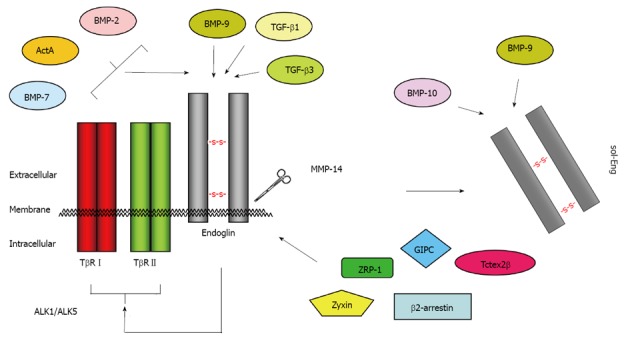Figure 4.

Binding partners of endoglin. Endoglin physically interacts via its extracellular domain with TGF-β1, TGF-β3 and BMP-9[110]. The short cytoplasmic domain has affinity for ZRP-1[63], Zyxin[64], GIPC[67], β-arrestin-2[66], and Tctex2β[65]. In conjunction with TβRI and TβRII, the binding spectrum is extended to BMP-2, BMP-7 and ActA[111]. After proteolytic cleavage (shedding) by MMP-14 (also known as membrane-type matrix metalloproteinase MT1-MMP), the soluble form of endoglin (sol-Eng) is released[59]. This form has capacity to bind BMP-9 and BMP-10[113]. TGF: Transforming growth factor; BMP: Bone morphogenetic protein.
